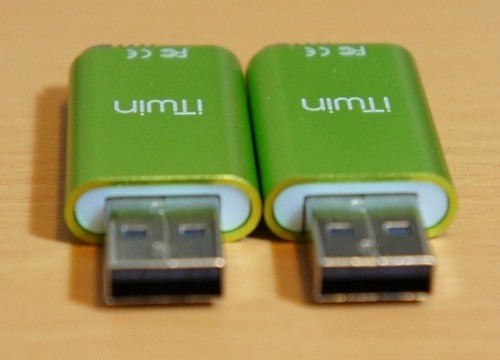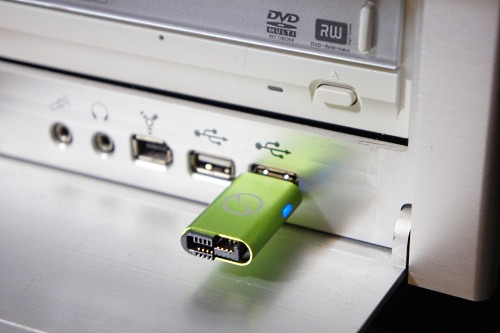The iTwin gadget simplifies remote file transfer from PC to PC

Today I came across a description of an interesting gadget that looks like a flash drive called iTwin. And for good reason it got this name, because to work with iTwin you need to use two devices at the same time (they are sold in pairs). For a quick understanding of the principle of the device, the developers suggest that iTwin, installed on two different PCs, as if unite both devices, arbitrarily distant from each other, into a network. First you need to insert the device into one PC, install the software contained on iTwin, and copy or move the files that need to be transferred to another computer to the device folder. As soon as you insert the iTwin paired device into another computer, the files copied or transferred to the first iTwin will appear in the device folder on the other computer. In general, it turns out something like a hardware Dropbox, the analogy is not quite complete, but it helps to understand what iTwin is intended for.
iTwin works via the Internet, and can combine two computers with Windows into a single network, as mentioned above. You can copy, delete, edit any files on one PC from another. In addition, it is very easy to transfer files from one PC to another, for example, sending photos from vacation, while in a hotel, to your home computer. Of course, if you do not have a particularly “wide” channel, the transfer of large files can take a long time.
')

Interestingly, the transmitted data is protected by 256-bit AES encryption. This feature allows manufacturers to argue that iTwin can be used by military, bank employees and representatives of other areas where reliable information protection is needed. In addition, you can also set a password that you will need to enter each time you connect iTwin.

Connected iTwin does not allow the computer to enter sleep mode. Interestingly, the device continues to function if the user has locked his PC, and the port used by the device is the same as that used by the browser, so there should be no problems with firewalls. The connected device is displayed on the PC as a system folder, and not as a USB flash, so here we have another analogy with Dropbox.
Via chipchik
Source: https://habr.com/ru/post/124727/
All Articles